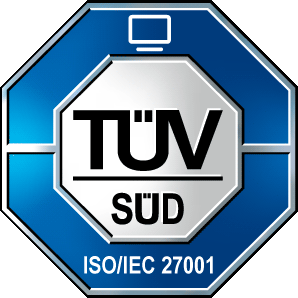Software tools designed to help individuals and teams to manage their tasks, time, and projects more efficiently are often referred to as Productivity Apps. They aim to streamline workflows, reduce distractions, and enhance overall productivity by providing numerous features that support communication and collaboration within an organization. Here’s a deep dive into the different productivity apps and how they can be used.
Task Management Apps like Todoist, Microsoft To-Do and TickTick helps users create, organize, and track tasks and to-do lists. They often include features like deadlines, reminders, and prioritization to ensure tasks are completed on time.
Project Management Apps which includes Trello, Asana, Jira etc. are designed for managing larger projects with multiple tasks, team members, and deadlines. They often include tools for assigning tasks, tracking progress, and collaborating with team members.
Note-Taking Apps allow users to capture and organize information quickly. They support various formats, including text, images, and even audio notes, making it easy to document ideas, meeting notes, or research. Evernote, OneNote, Notion and Obsidian are a few examples.
Calendar Apps help users schedule meetings, appointments, and events. Google Calendar, Apple Calendar, Outlook Calendar etc. are a few to name in this category. They often integrate with task management tools and offer features like reminders, event invitations, and shared calendars for team collaboration.
Collaboration Apps like Slack, Microsoft Teams, Zoom and Google Meet facilitate communication and teamwork, especially in remote or distributed teams. They include messaging, video conferencing, and file-sharing features to keep everyone connected and on the same page.
Document and File Management Apps store, organize, and share files and documents. They often include collaboration features, version control, and integration with other productivity tools. Prominent names in this area include Google Drive, Dropbox and Microsoft OneDrive.
Automation Apps connect different applications and automate repetitive tasks. For example, Zapier, IFTTT etc. are capable of saving email attachments to cloud storage or post social media updates at scheduled times.
The Next Big Question: What’s the Need of the Hour?
As we can see, there are a wide variety of productivity apps available. Let’s take a look at a few of these apps, specifically from the note-taking productivity app category.

Evernote
Evernote has long been a leader in the note-taking world, celebrated for its ability to organize information with precision. Its strength lies in its structured approach, allowing users to classify their notes through notebooks and tags, which makes retrieving information a breeze. One of Evernote’s signature features is its web clipper, a powerful tool that lets you capture articles, web pages, and PDFs directly into your notes, turning online content into a personal resource. Additionally, Evernote’s search capabilities are robust, offering the ability to search within notes, PDFs, and even handwritten text, making it an invaluable tool for those who deal with large volumes of information.
However, Evernote’s evolution hasn’t been without its downsides. The free tier has become increasingly restrictive, limiting the number of devices that can be synced and the amount of storage available, which might discourage new users. Performance issues also plague the app, with some users reporting slowdowns, especially when working with larger databases. The user interface, while powerful, can feel cluttered and overwhelming, particularly for those new to the platform.

OneNote
Microsoft’s OneNote is a versatile and accessible note-taking app that integrates seamlessly into the Microsoft Office Suite, making it a natural choice for users already within the Microsoft ecosystem. OneNote offers a flexible, freeform note-taking experience, allowing you to click anywhere on the canvas to start typing, drawing, or inserting media, which makes it particularly appealing for creative minds and those who prefer a more unstructured approach. The app’s handwriting recognition is another significant strength, making it ideal for tablet users who rely on stylus input.
OneNote, while powerful, does have some limitations. Its search functionality, although decent, doesn’t quite match the power of Evernote’s, particularly when it comes to searching within attachments. The organizational structure, which revolves around a notebook-section-page hierarchy, might feel limiting for users accustomed to more flexible systems like tags. Additionally, the web clipper isn’t as advanced as Evernote’s, and syncing large notebooks across devices can sometimes be sluggish, potentially hindering productivity.

Notion
Notion stands out as an all-in-one workspace, combining notes, databases, tasks, and wikis into a single, highly customizable platform. Its versatility makes it a favorite among both individuals and teams, offering deep customization options that allow users to create their own layouts, templates, and workflows. Notion excels in real-time collaboration, enabling teams to work together seamlessly on projects. The ability to embed rich media, from videos to code snippets, further enhances the dynamism and interactivity of your notes.
A key innovation in Notion’s architecture is its approach to local caching. To achieve this, Notion’s engineers turned to SQLite, a lightweight database, which they implemented in WebAssembly (WASM) to run directly within the browser. Traditionally, browsers are limited to executing JavaScript, but WASM expands this capability, allowing code written in languages like C/C++, Rust, and Go to be executed in the browser. WASM’s near-native execution speeds made it an ideal choice for client-side caching, enabling Notion to leverage the browser’s Origin Private File System (OPFS) API to store crucial data locally. This significantly reduces the need for constant server requests, cutting down on the time it takes to fetch or save content, and ultimately laying the groundwork for Notion’s impressive speed advancements.
Despite its many strengths, Notion does come with a learning curve. Its extensive customization options can be overwhelming for new users, and setting up complex workflows can require a significant investment of time. Offline functionality, while improving, still lags behind competitors, making it less reliable for users who need constant access without internet connectivity. Additionally, performance can suffer with complex setups, particularly on lower-end devices.

Obsidian
Obsidian is a note-taking app tailored for those who value privacy, customization, and control over their data. It operates on plain text Markdown files, which makes it lightweight, fast, and future-proof. With all your notes stored locally, Obsidian ensures that your data remains fully within your control, a feature that appeals to privacy-conscious users. One of Obsidian’s most distinctive features is its ability to create bidirectional links between notes, with a graph view that visualizes the connections between your ideas. This makes it an ideal tool for building a personal knowledge base or a “second brain.”
Customization is at the heart of Obsidian’s appeal. The app boasts a rich ecosystem of community plugins and themes, allowing users to tailor the app to fit their unique workflows. Since all data is stored locally, Obsidian’s performance is quick, and it operates offline by default, making it a reliable choice for users who need access to their notes without internet connectivity.
However, Obsidian isn’t without its challenges. It lacks a built-in cloud sync feature, which means users must rely on third-party services like Dropbox, Google Drive, or Git for synchronization across devices. The steep learning curve, particularly with the app’s linking system and extensive plugin options, can be daunting for new users or those who prefer a more straightforward note-taking experience. Additionally, Obsidian is designed primarily for individual use, lacking the collaboration features that apps like Notion or OneNote offer, which may limit its appeal for team-based work.
The Question that has got No Specific Answer: Who’s the Ultimate Winner Here?
The landscape of productivity apps is diverse, with each offering unique strengths tailored to different user needs. Evernote excels in structured information management, but its recent limitations may deter some users. OneNote provides a flexible, integrated experience within the Microsoft ecosystem, though it faces challenges with search and syncing. Notion, with its innovative use of WASM and SQLite for local caching, offers unparalleled customization and speed, albeit with a steeper learning curve. Obsidian appeals to users who value privacy and control, thanks to its local storage and extensive customization, but its lack of cloud sync and collaboration features may limit its appeal. Ultimately, the best productivity app depends on individual preferences, whether for speed, flexibility, collaboration, or data control.









